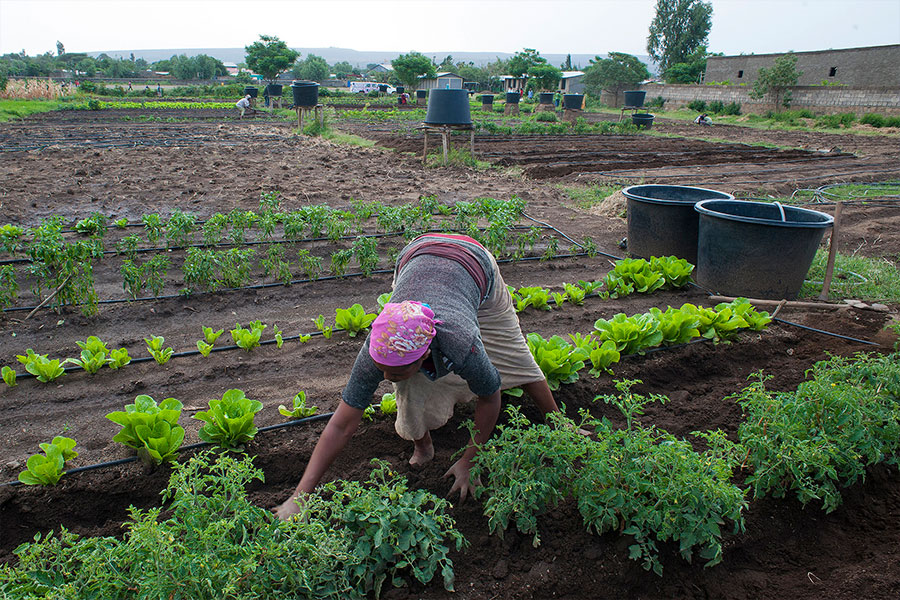
Radar | Apr 30,2022
Takle Uma, minister of Mines, appears to be determined to streamline raw material supplies to the cement industry, mainly controlled by youth groups regional states granted concessions. The Minister issued a directive last week, hoping he could push for consistency in limestone, pumice, gypsum, and basalt supplies.
Experts at the Ministry have been drafting the directive for the past six months, which enforces legally binding working relationships between input suppliers and cement plants. Takle, a former deputy mayor of Addis Abeba, and his team at the Ministry want to see a sustainable raw material supply, compelling youth associations to enter into a two-year contract with cement factories. The Ministry will determine the price of inputs.
Cement plants had operated quarries before they were persuaded to hand them over to registered suppliers and associations organised by unemployed youth in 2017. These associations have been the major source of raw materials for the last five years. However, supply has been erratic, contributing partly to falling production observed at cement plants.
According to the Ethiopian Geological Survey, Ethiopia’s limestone reserve is estimated at 171 million tonnes. Close to 57 million tonnes of gypsum and 47 million tonnes of pumice deposits have also been identified.
For the first three years of operation, Kuyu Cement depended on a quarry 13Km from its plant in Shewa Zone. Incorporated in 2014, Kuyu has since been sourcing inputs from three suppliers. Its managers say the arrangement has been challenging due to fluctuating prices, adversely affecting output.
“Suppliers are increasing their prices constantly," said Berhanu Gebru, supply manager at Kuyu. "We can't change our price at the factory gate.”
The plant can produce 1,500tn of cement a day. It produces a third of the volume at most, buying a tonne of limestone for 180 Br.
Berhanu says there are other issues constraining supply.
“The quality of the raw materials is not up to standard,” he told Fortune.
The aggregate annual cement production capacity has gone up by more than threefold over the past 15 years, reaching 18 million tonnes. However, plants have been hard pressed to realise their potential. The highest volume they churned out was five years ago, when 20 plants produced 12.7 million tonnes. The output was seven million tonnes last year, with the capacity utilisation rate under half. All but one of the 20 cement plants is operational, mainly located in the Oromia Regional State.
The Messebo Cement Factory, erected on the northern outskirts of Meqelle, went out of operation following the start of the civil war almost two years ago. It deprived the market of the daily production of 7,000tn of cement a day and over two million annually.
The demand for cement is rising, with researchers projecting it to reach 20 million tonnes in three years. Although average per capita cement consumption has nearly doubled to 62Kg in the last decade, it still fares far below the 500Kg global average.
Regional state administrations are tasked with creating linkages between factories and input producers organised under 151 youth associations, with more than 10,000 members.
Zewdu Tadesse, director of mining licensing at the Oromia Mineral Development Authority, is aware that cement factories have been troubled by the escalating prices of inputs the associations supply. Their complaints led to a study, conducted by experts from the federal and regional mining bureaus.
“The directive is the result of the study,” he told Fortune.
Abenet Belay, a senior investment consultant at MPE Business & Investment Consultancy, says that handing over the inputs supply market to associations was done without due process. The cement factories should have kept quarries to ensure sustainable and quality raw material supplies, according to him.
“The unemployed youth could work at the quarry sites,” he said.
The experts believe that it is not only the inputs supply market but the marketing of the final product that needs revamping to boost production and supply.
The Mines Ministry is responsible for regulating the supply of inputs, and the Ministry of Trade & Regional Integration is mandated to oversee the marketing and distribution of cement. Recently, the Trade Ministry ordered cement factories to bypass the intermediaries in the supply chain to supply cement to retailers.
PUBLISHED ON
[ VOL
, NO
]

Radar | Apr 30,2022

Viewpoints | Sep 23,2023

Radar | Jul 06,2025

Radar | Mar 14,2020

In-Picture | Apr 27,2025

Fortune News | Sep 03,2022

Radar | Jul 11,2021

Fortune News | Jun 26,2021

Fortune News | Dec 25,2021

Radar | Jan 29,2022

Dec 22 , 2024 . By TIZITA SHEWAFERAW
Charged with transforming colossal state-owned enterprises into modern and competitiv...

Aug 18 , 2024 . By AKSAH ITALO
Although predictable Yonas Zerihun's job in the ride-hailing service is not immune to...

Jul 28 , 2024 . By TIZITA SHEWAFERAW
Unhabitual, perhaps too many, Samuel Gebreyohannes, 38, used to occasionally enjoy a couple of beers at breakfast. However, he recently swit...

Jul 13 , 2024 . By AKSAH ITALO
Investors who rely on tractors, trucks, and field vehicles for commuting, transporting commodities, and f...

Oct 18 , 2025
The political establishment, notably the ruling party and its top brass, has become p...

Oct 11 , 2025
Ladislas Farago, a roving Associated Press (AP) correspondent, arrived in Ethiopia in...

Oct 4 , 2025
Eyob Tekalegn (PhD) had been in the Governor's chair for only weeks when, on Septembe...

Sep 27 , 2025
Four years into an experiment with “shock therapy” in education, the national moo...